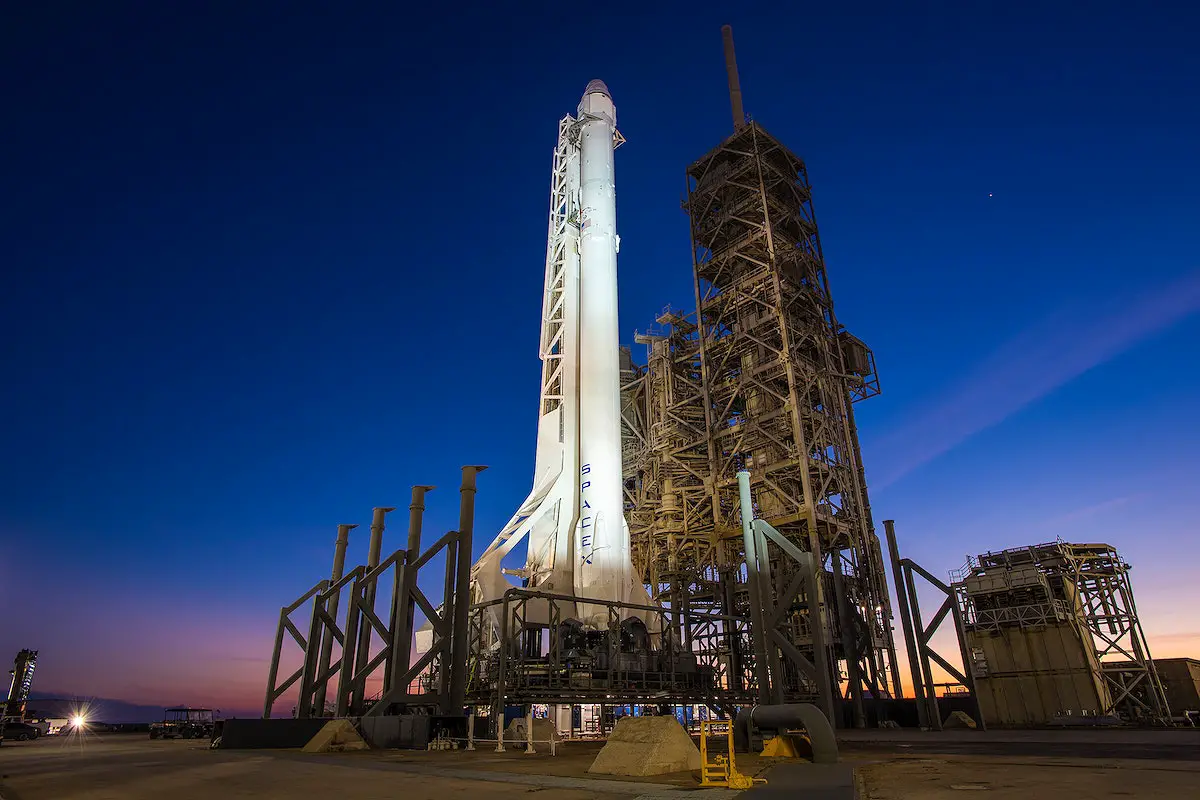There is a palpable sense of anticipation in the air as SpaceX gets ready to embark on yet another mission that will change the course of history. This one will include the launch of a Falcon 9 rocket that will carry 54 of the company’s Starlink internet satellites. This launch, which is planned to take place on Saturday at 11:50 p.m. Eastern Daylight Time from the Cape Canaveral Space Force Station in Florida, is intended to add to the ever-expanding constellation of Starlink satellites that are currently in orbit around the earth. The mission has the potential to be a big step forward for SpaceX, as the first stage of the Falcon 9 rocket will attempt to land on the droneship A Shortfall of Gravitas. If successful, this would potentially tie an incredible record that was achieved just last Sunday.
Falcon 9’s First Stage Landing
The safe landing of the first stage of the Falcon 9 rocket is one of the most impressive elements of SpaceX’s operations, since the company is able to recover and reuse rocket components. After successfully delivering its payload into space, the first stage of the Falcon 9 will begin its descent back to Earth and aim to make a pinpoint landing on the droneship named A Shortfall of Gravitas, which is positioned in the Atlantic Ocean. This landing, if it is successful, will tie the record that was achieved by a different Falcon 9 first stage during an earlier Starlink mission just a few days earlier. This success not only demonstrates SpaceX’s dedication to reusability but also puts us one step closer to the dawn of a new age in which space exploration can be conducted at a lower cost.
The Starlink Constellation
SpaceX’s Starlink satellite network is working toward the goal of providing global broadband internet service, especially in areas that are currently underserved. The constellation becomes larger with each new satellite that is placed into orbit, and will eventually consist of a network of hundreds of spacecraft orbiting the Earth. The major goal is to provide an internet service with high bandwidth and low latency that is capable of bridging the digital divide and bringing dependable connectivity to every part of the planet. If SpaceX is able to successfully install 54 additional Starlink satellites, it will move one step closer to achieving this lofty target.
India’s Chandrayaan 3 Mission
While SpaceX is getting ready to launch Starlink, India has just started its very own lunar mission called Chandrayaan 3. On Friday, India’s Chandrayaan 3 mission took off for the moon in an effort to improve upon the results obtained by its two preceding missions, which were known as Chandrayaan 1 and 2. This daring endeavor has as its goals the deeper exploration of the lunar surface, the improvement of our understanding of the natural satellite of Earth, and the paving of the road for both future scientific advancements and the possibility of manned missions to the moon.
Rocket Lab’s Satellite Launch
Rocket Lab, a private aerospace firm based in New Zealand, is also getting ready for a large satellite launch. The company does not want to be outdone, so they are preparing for it. They will use their Electron launcher on Sunday to send seven miniature satellites into space. This launch exemplifies the ever-increasing capabilities of private space endeavors and the contributions these companies are making to the rapidly developing satellite industry. The Electron launcher developed by Rocket Lab has developed into a dependable workhorse that can successfully release modest payloads and encourage innovation in space-based technologies.
Multiple missions are ready to make substantial strides in both our understanding of space and the technology that underpins it, which leads us to the conclusion that the world of space exploration and satellite deployment continues to advance at an astounding rate. The launch of 54 Starlink satellites by SpaceX’s Falcon 9 rocket, which may have tied a recent record for first-stage recovery, is yet another significant step forward for the firm and its goal of providing internet access everywhere in the world. Both the Chandrayaan 3 mission from India and the satellite launch from Rocket Lab are now making contributions to the continuous advances made in lunar exploration and the deployment of tiny satellites, respectively. These businesses bring attention to the wide variety of initiatives that are driving innovation in the space industry and bringing about a new era of connection, exploration, and scientific discovery.
![]()
